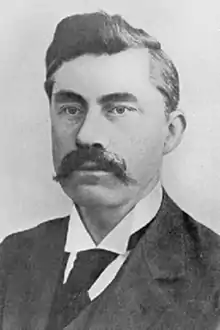Contagium vivum fluidum
Contagium vivum fluidum (Latin: "contagious living fluid") was a phrase first used to describe a virus, and underlined its ability to slip through the finest-mesh filters then available, giving it almost liquid properties. Martinus Beijerinck (1851-1931), a Dutch microbiologist and botanist, first used the term when studying the tobacco mosaic virus, becoming convinced that the virus had a liquid nature.[1]
In 1892, Dmitri Ivanovsky had discovered that the cause of tobacco mosaic disease could pass through Chamberland's porcelain filter. He noted these findings but felt that they could only have resulted from a cracked filter. It was left to Beijerinck, in 1898, to put forward the idea that the pathogen was small enough to pass through the filter routinely used to trap bacteria.[2]
Ivanovsky, irked that Beijerinck had not cited him, recreated Beijerinck's experimental set-up and demonstrated that particles of ink were small enough to pass through the filter, thus leaving the particulate or fluid nature of the pathogen unresolved.[3] The invention of the electron microscope in 1931 led to the first virus images in 1935 by the American biochemist and virologist Wendell Meredith Stanley. The second half of the 1900s resulted in the discovery of more than 2,000 virus species infecting animals, plants and bacteria.
References
- "Archived copy". Archived from the original on 2015-03-21. Retrieved 2013-01-06.CS1 maint: archived copy as title (link)
- http://www.microbiologytext.com/index.php?module=book&func=displayarticle&art_id=29
- Angela Creager, Where Tobacco Mosaic Has Led Us
